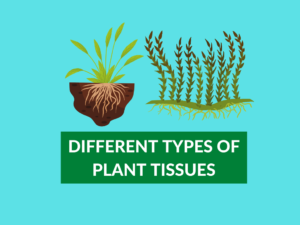What is Apoptosis?
Apoptosis, also known as programmed cell death, is a regulated process of cell suicide that occurs in multicellular organisms. It plays a crucial role in development, homeostasis, and elimination of damaged or unnecessary cells in the body. Apoptosis helps maintain the balance between cell growth and death, ensuring the proper functioning of tissues and organs.
Examples of Apoptosis:
1. Fetal Development: Apoptosis aids in shaping various body structures during embryonic development, such as the separation of fingers and toes in the developing limbs.
2. Immune System: When immune cells recognize cells infected with a virus or bacteria, they induce apoptosis to eliminate the threat and prevent the spread of infection.
3. Hormone Regulation: Apoptosis regulates the number of cells in hormone-dependent tissues, such as the menstrual cycle in the female reproductive system.
What is Necrosis?
Necrosis is an unregulated or accidental form of cell death that occurs due to tissue injury, infection, or exposure to toxins. Unlike apoptosis, necrosis is a pathological process that leads to inflammation and can be harmful to surrounding tissues. It is typically caused by severe trauma or an ongoing infection.
Examples of Necrosis:
1. Infarction: When blood supply to a tissue or organ is disrupted, such as in a heart attack or stroke, cells within the affected area undergo necrosis.
2. Burn Injuries: Severe burns can cause necrosis in the affected skin tissue due to the thermal damage.
3. Gangrene: Necrosis can occur in body tissues affected by a lack of blood supply, often seen in cases of untreated wounds or serious circulatory problems.
Differences Between Apoptosis and Necrosis:
| Difference Area | Apoptosis | Necrosis |
|---|---|---|
| Cellular Response | Programmed, controlled, and orderly cell death. | Uncontrolled and accidental cell death. |
| Physiological Function | Regulates tissue development, homeostasis, and immune response. | Result of severe cellular damage, inflammation, and disease. |
| Morphological Changes | Shrinking and condensation of the cell, forming apoptotic bodies. | Cell swelling, membrane rupture, and release of cellular contents. |
| Inflammation | No inflammation. Cell debris is rapidly cleared without causing inflammation. | Inflammatory response due to spillage of cellular components and activation of immune cells. |
| Energy Dependence | Requires energy (ATP) to execute the programmed cell death process. | Does not require energy and occurs as a result of biochemical disruption. |
| Role in Cancer | Apoptosis helps eliminate cancer cells and prevent tumor formation. | Necrosis can trigger inflammation that promotes tumor growth in some cases. |
| Cellular Environment | Apoptosis occurs under normal physiological conditions. | Necrosis occurs in response to severe damage, infection, toxins, or lack of blood supply. |
| DNA Damage | Apoptosis is provoked by DNA damage or abnormal cell division. | Necrosis is not directly influenced by DNA damage. |
| Membrane Integrity | The intact cell membrane is maintained during apoptosis. | Cell membrane integrity is lost during necrosis, leading to the release of intracellular contents. |
| Process pH | Apoptosis leads to acidification of the cell. | Necrosis results in cellular alkalization. |
Conclusion:
In summary, apoptosis and necrosis are two distinct processes of cell death with significant differences in their regulation, function, morphological changes, and impact on surrounding tissues. While apoptosis is a controlled and orderly process that maintains tissue homeostasis, necrosis is an unregulated event associated with severe damage and inflammation.
Knowledge Check:
- True or False: Apoptosis is a regulated process, while necrosis is an accidental form of cell death. (Answer: True)
- Which process occurs in response to severe cellular damage, infection, or lack of blood supply? (Answer: Necrosis)
- What are the morphological changes observed during apoptosis? (Answer: Shrinking and condensation of the cell, formation of apoptotic bodies)
- Does apoptosis require energy to execute the programmed cell death process? (Answer: Yes, apoptosis requires energy in the form of ATP)
- What is the role of necrosis in cancer? (Answer: Necrosis can trigger inflammation that promotes tumor growth in some cases)
- Is necrosis associated with an inflammatory response? (Answer: Yes, necrosis leads to inflammation due to the release of cellular components)
- Which form of cell death occurs during fetal development for shaping body structures? (Answer: Apoptosis)
- What happens to the cell membrane integrity during necrosis? (Answer: Cell membrane integrity is lost during necrosis)
- True or False: Apoptosis occurs under normal physiological conditions. (Answer: True)
- Does apoptosis occur in response to severe damage or infection? (Answer: No, apoptosis occurs as a controlled process under normal conditions)
Related Topics:
1. Difference between Apoptosis and Autophagy
2. Apoptosis in Development and Disease
3. Necrosis and Inflammation Relationship
4. Role of Apoptosis in Cancer Prevention
5. Necrosis and Tissue Damage



